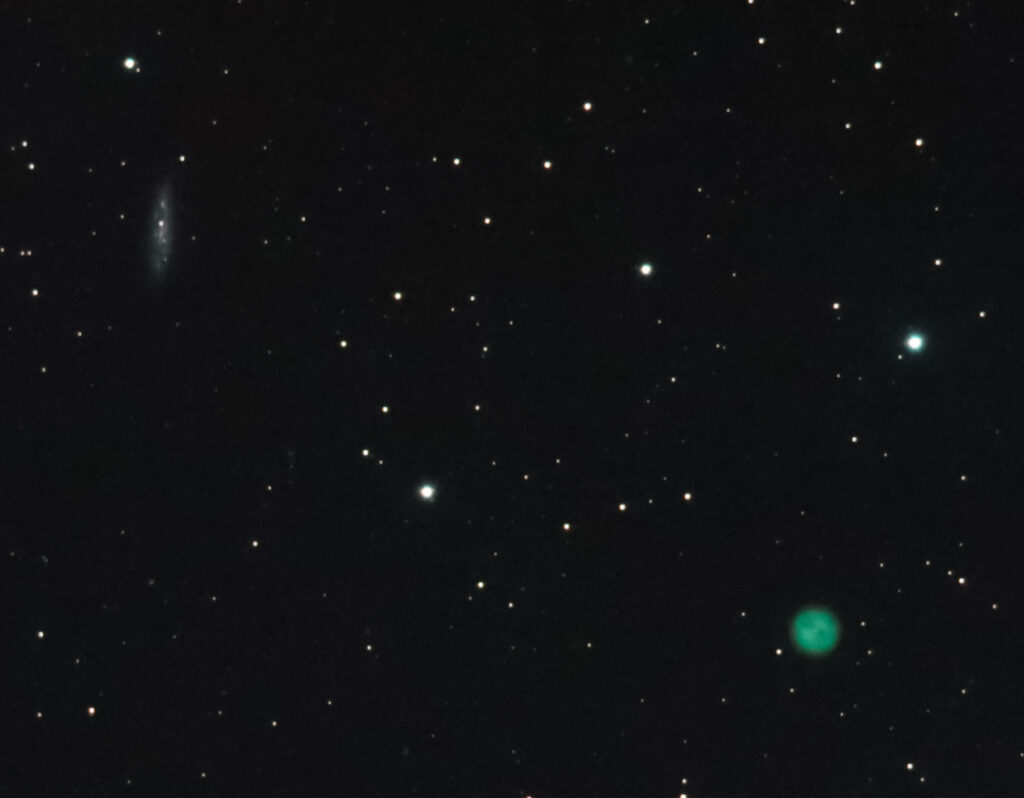Light Pollution Filter
This blog serves as sort of a diary that I use to reference past projects and to see my progression in the hobby over the years. I’ve come a long way from my early astroimaging attempts, but I still have a long way to go.
Side note: I am going to stop posting exposure details on images unless someone (Hello? Is anyone there?) asks me to do otherwise. I am not certain what purpose they serve, as everyone’s astroimaging rig is different and results vary depending on location and weather conditions. I will post details on my setup later on once everything has “stablized.”
I am rebuilding and relearning after my Long Hiatus, addressing issues individually and methodically. Now that I have gotten the alignment and tracking issues with the mount figured out, I turned my attention to improving the quality of my images, especially from here in my light-polluted neighborhood.
I will still be using the old Canon EOS Rebel T3 DSLR for the foreseeable future. It is not an ideal camera for my scope, as I stated previously, but it is still doing a fair job at taking pictures.
One thing that the old rig had that the new rig has lacked is a means of filtering out that pesky light pollution. I live near the light dome of Huntsville, Texas. The sky here measures class 5 on the Bortle Scale, which means that a lot of stars and other astronomical objects are “washed out” by the light being scattered through the atmosphere. It also greatly reduces the contrast of images.
I purchased a relatively inexpensive CLS (City Light Suppression) filter made by SVBONY. This little gadget fits into a slot in the camera that is located behind the flange where the camera attaches to the telescope. It filters out the wavelengths (colors) of light generated by most light pollution sources, such as sodium and mercury streetlamps.
So, with the new filter installed, I set up the rig in the driveway one clear night and took some pictures.

I chose Messier 46, an open cluster in the Puppis constellation, because at the time it was located directly over the light dome of Huntsville. I also chose it because pretty planetary nebula NGC 2438–the blue-green ring in the image above–is one of my favorite targets.
If you look carefully near the right-hand edge, just above the center, you might spot planetary nebula PK 231+04.1. It appears as a dim, gray disc inside a group of small stars.
The filter creates a cyan-colored cast to all of the images that makes color-balancing more difficult. However, it does a fair job of filtering out unwanted light from streetlamps. Overall, I am pleased with the results.
I wanted to see how the filter performed in a darker part of the sky, so I slewed the scope over to Messier 97, the Owl Nebula in Ursa Major, another planetary nebula. Edge-on spiral galaxy Messier 108 was nearby.

Next on my list of Things-To-Do is figuring out how to control the mount from a computer and performing autoguiding.

Leave a Reply